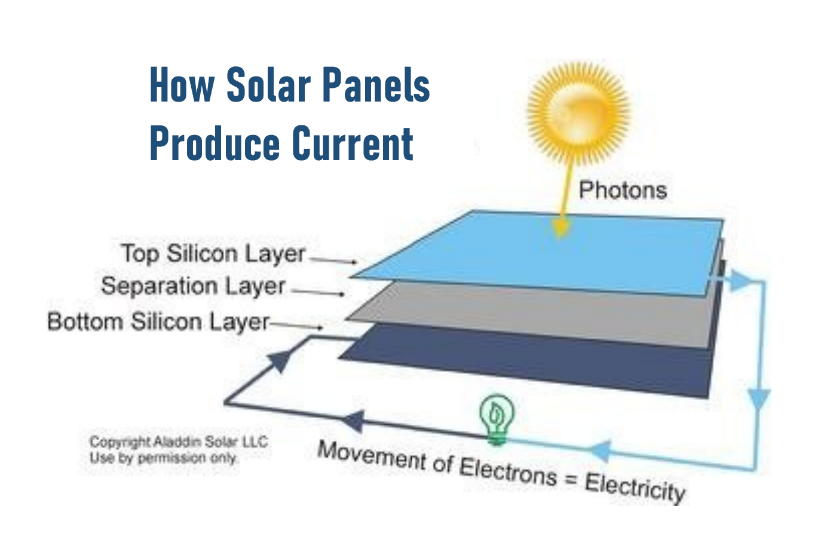The basic way solar panels work is surprisingly simple.
Electrons on the top side get “knocked loose” from their molecular bonds by the energy in sunlight
They’re then channeled through a wire running to the bottom side and, voilà, electrical current is produced

That makes the electricity produced by your solar panels DC (direct current), meaning it's always traveling through the wires in just one direction.
The problem is that our home appliances run on AC (alternating current), which rapidly switches directions (60 times a second in the US).
That’s why your solar panels need to be paired with devices called “inverters” that convert the DC power they produce into usable AC.
Every inverter also has a maximum amount of power it can handle at any given time. And many homeowners are surprised to discover that their inverter capacity is lower than the maximum amount of power their panels can generate.
Their concern is understandable. After all, wouldn’t using inverters with a lower capacity than your solar panels place an unnecessary limit on the amount of power they produce?
Surprisingly, the answer here is, “no.” Because of the way inverters work, it turns out that keeping them somewhat below panel capacity actually increases power output.
Let's find out why.
Increased cost with minimal payoff
One important factor is that higher-capacity inverters cost more.
That means that matching inverter capacity to panel capacity would raise the overall cost of your solar system.
Your solar panels, on the other hand, are only likely to reach their maximum capacity for a few hours on the sunniest mid-summer days. So, those are the only times using more expensive inverters would serve any purpose.
And, even on those occasions, the payoff isn’t that great.
An example
Here’s a power output graph for an actual solar system on a very sunny day. The system has 11.8 kW of panel capacity, but only 10 kW of inverter capacity.

See that small, green-shaded area at the top? That represents all the extra power the homeowners would have gained if their inverters had, instead, been sized to match their panels.
Heat & efficiency
To make matters worse, just like other electronics, solar panels lose efficiency when they get hot. That means the true power gain that day would have been even less, amounting to well under 5%.
Since even that small gain would have only occurred on the very sunniest mid-summer days, it’s highly unlikely that such a minimal payoff would have justified the extra expense.
Capacity & efficiency
But there’s another even bigger factor at work here. You see, the closer an inverter gets to its maximum capacity, the more efficiently it operates.
So, if inverters were sized to match panel capacity, they'd be operating further from capacity and, hence, less efficiently, 100% of the time.
We'll discuss the details in Part 2.